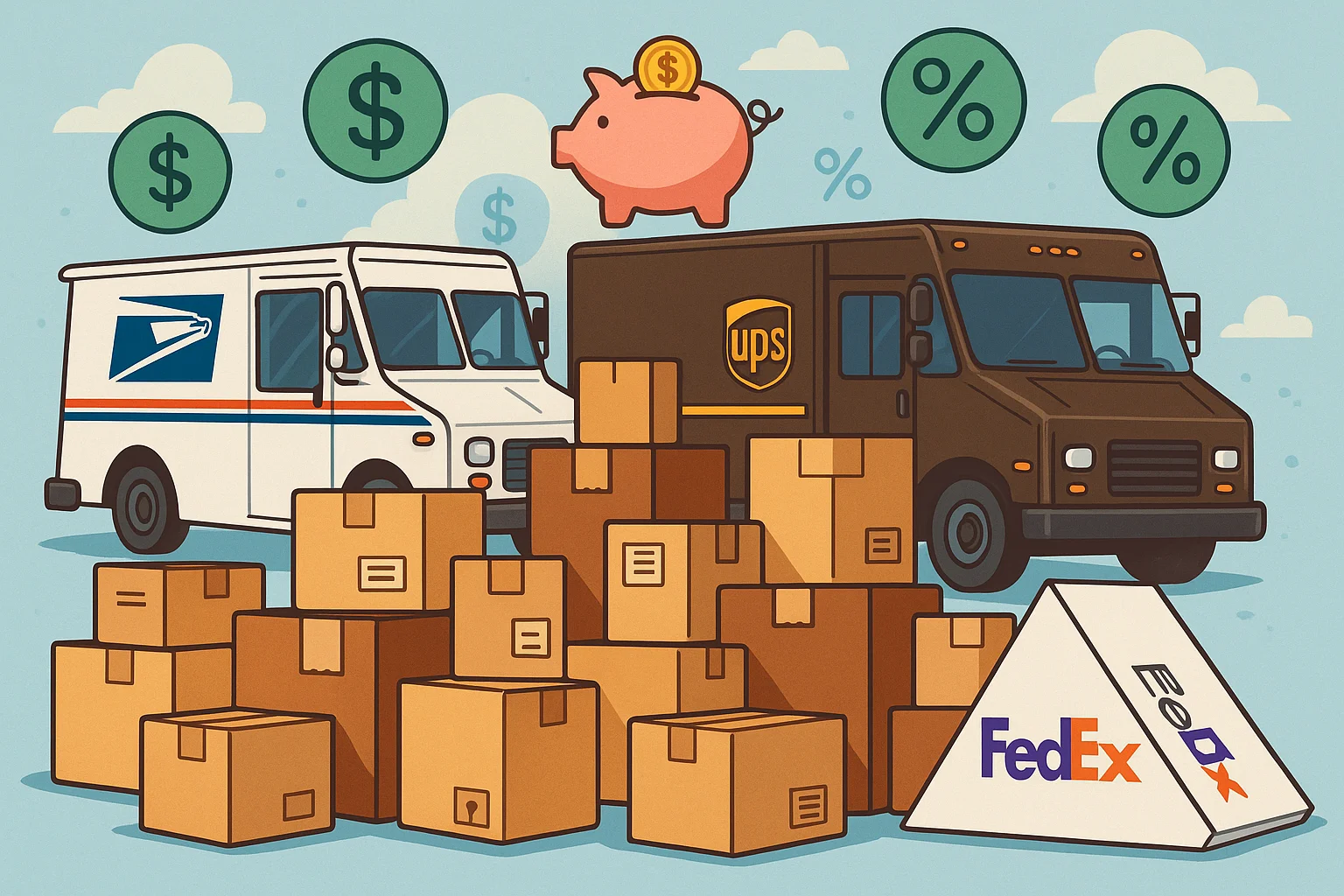When it comes to shipping boxes-whether heavy, oversized, or standard-the cost can quickly escalate without careful planning. The main takeaway is that leveraging the right carrier, packaging strategy, and shipping service can dramatically reduce costs. Below is a detailed guide exploring proven methods, cost-saving tactics, and best practices to ship any box as cheaply as possible, organized by theme and shipping scenario.
1. Understanding Dimensional Weight vs. Actual Weight
Key Concept: Carriers use dimensional weight (DIM weight) or actual weight-whichever is greater-to calculate shipping charges. Dimensional weight equals (length × width × height in inches) ÷ DIM divisor (usually 139 for domestic ground shipments).
- For lightweight but bulky boxes, DIM weight often exceeds actual weight, so optimizing box size is critical.
- For heavy dense items, actual weight governs cost, and carriers may impose additional handling fees for shipments exceeding 70 lbs (USPS), 150 lbs (FedEx Ground), or 150 lbs (UPS Ground).
2. Choosing the Right Carrier
Different carriers have varied rate structures, surcharges, and zone-based pricing. Comparing services is essential:
| Carrier | Best For | Strengths | Limitations |
|---|---|---|---|
| USPS | Small to medium, lightweight, non-urgent | Free flat-rate boxes, no fuel surcharges, free pickup | 70 lb weight limit, limited size, no door-to-door tracking for large parcels |
| FedEx Ground | Heavy, medium-large shipments | Competitive rates on heavy items, more forgiving weight limits, robust tracking | Fuel surcharge, residential delivery fees |
| UPS Ground | Heavy, bulky shipments | Volume discounts, broad network, reliable delivery | Residential surcharges, additional fees for oversized items |
| Regional Carriers (OnTrac, LaserShip) | Local, short-haul | Lower zone rates, faster regional speed | Limited geographic coverage |
2.1 USPS Flat-Rate Boxes
USPS Priority Mail Flat-Rate offers fixed pricing regardless of weight (up to 70 lbs) or zone. Sizes include Small, Medium, Large.
- Large Flat-Rate Box: Ships up to 70 lbs anywhere in the U.S. for a set fee (e.g., $23.05).
- When to Use: Dense, heavy items that fit within the box dimensions.
2.2 FedEx and UPS Ground
- Typically charge by actual weight if over DIM weight threshold.
- Negotiate volume discounts or use business shipping accounts to lower per-package rates.
- Residential surcharges may apply; consider using commercial addresses or smart pickups.
2.3 Freight and Less-Than-Truckload (LTL)
For extremely heavy (>150 lbs) or palletized shipments, LTL freight carriers or freight aggregators (Freightquote, uShip) provide best value:
- LTL Freight: Cost based on freight class, weight, dimensions, distance, and liability coverage.
- Freight Brokers/Aggregators: Consolidate smaller shipments to bid with multiple carriers, often providing lower rates than going direct.
3. Packaging and Consolidation Strategies
3.1 Right-Sizing and Cube Optimization
- Use packaging calculators (carrier websites) to estimate DIM weight and choose the smallest box that fits the item plus adequate padding.
- Remove excess air space with void fill, foam, or custom inserts to avoid large box surcharges.
- Consider multi-pick packaging-group multiple items into one box rather than separate shipments.
3.2 Use of Flat-Rate and Regional Rate Boxes
- USPS Regional Rate Boxes (A & B) offer zone-based flat rates for heavy items traveling short distances.
- Regional Rate A: Up to 15 lbs for lower fees within the same region.
- Regional Rate B: Up to 20 lbs.
- When to Use: Shipping heavy but small-volume items to nearby zones.
3.3 Palletizing and Bulk Shipments
- For more than five boxes going to the same location, palletizing and shipping LTL freight often reduces per-unit cost.
- Ensure pallets meet carrier requirements (e.g., four-way entry, proper banding).
- Use shrink-wrap and corner protectors to secure loads and avoid reclassification surcharges.
4. Leveraging Online Shipping Tools and Discounts
4.1 Discounted Postage Platforms
- Services like Pirate Ship, ShipStation, and Shippo provide commercial pricing on USPS, UPS, and FedEx shipments without minimum volume commitments.
- Automatic application of best available rate for each package, batch label printing, and address validation to reduce rerouting fees.
4.2 Carrier Negotiations and Account Pricing
- Businesses can negotiate custom rate agreements based on monthly shipping volume.
- Compare CIP (Carrier Invoice Pricing) to published rates to verify discounts.
- Consolidate spending with a single carrier to achieve tiered discount thresholds (e.g., 5–10% off retail rates at 1,000 packages/month).
4.3 Third-Party Logistics (3PL) Partnerships
- Outsource fulfillment to 3PL providers that leverage aggregated shipping volume across clients to secure lower carrier rates.
- 3PLs also provide warehousing, returns management, and inventory control, reducing overhead.
5. Shipping Service Selection and Timing
5.1 Ground vs. Air
- Ground services (FedEx Ground, UPS Ground, USPS Retail Ground) are far cheaper than air (2–5× cost).
- Use air only for critical, time-sensitive shipments; low-value, heavy items should default to ground.
5.2 Zone Skipping
- For high-volume shippers sending multiple packages to the same distant zone, palletize and ship via freight to a regional distribution center, then re-enter the parcels as local ground shipments.
- Avoids high zone-based parcel surcharges.
5.3 Off-Peak and Fuel Surcharge Management
- Ship during off-peak shipping seasons to avoid peak surcharges (e.g., avoid holiday surcharges in November–December).
- Use fuel surcharge caps by negotiating with carriers or via third-party platforms.
6. International Shipping Considerations
While the focus is domestic, for cross-border shipments:
- Consolidators (DHL eCommerce, Asendia): Lower rates for untracked economy parcels.
- Customs Documentation: Accurate HS codes and detailed invoices prevent delays and fees.
- De Minimis Thresholds: Ship low-value goods under import thresholds to avoid VAT/GST and customs brokerage fees.
7. Real-World Cost Comparison
| Option | Weight Limit | Key Benefit | Approx. Cost for 30 lbs, 20×14×10″ Box |
|---|---|---|---|
| USPS Priority Mail Flat-Rate Large Box | 70 lbs | Predictable flat fee | $23.05 |
| USPS Regional Rate B (Zone 2) | 20 lbs | Lower local zone flat rate | $14.35 |
| FedEx Ground (Commercial Discount Applied) | 150 lbs | Competitive for heavy shipments | $45 |
| UPS Ground (Business Account, Zone 5) | 150 lbs | Volume discounts, reliability | $48 |
| LTL Freight (Palletized) | 500 lbs+ | Best for bulk heavy shipments | $150 (per pallet estimate) |
8. Practical Tips and Hacks
- Use Free Carrier-Provided Boxes: USPS Priority and Regional Rate boxes are free from post offices or online ordering.
- Hybrid Services: UPS SurePost or FedEx SmartPost leverages USPS for final-mile delivery-cheaper than standard ground but slower.
- Drop-Off vs. Pickup: Drop shipments at carrier facilities or third-party drop-off locations to avoid pickup fees.
- Insurance and Declared Value: Limit declared value to essential amounts to control insurance premiums; carriers include low-level coverage by default.
- Repackage Returned Goods: Inspect returned items and repackage with the original packaging to save on new materials.
9. Case Studies
9.1 E-Commerce Retailer
A boutique retailer shipping 100 heavy glassware boxes monthly saved 30% by:
- Switching to USPS Flat-Rate for items under 70 lbs fits.
- Using Pirate Ship to access commercial USPS pricing.
- Consolidating multiple small orders into larger shipments.
9.2 Furniture Startup
A direct-to-consumer furniture brand shipping large, heavy flat-packed chairs:
- Palletized orders and used LTL freight via Freightquote.
- Negotiated with one national carrier for volume discounts.
- Implemented zone skipping for shipments to the West Coast.
10. Conclusion and Recommendations
To ship boxes-regardless of size or weight-as cheaply as possible:
- Match box dimensions to item size to minimize DIM weight penalties.
- Leverage flat-rate and regional rate boxes for heavy, compact shipments.
- Compare carriers and services using online shipping tools for the best rates.
- Negotiate volume discounts or use 3PLs for large-scale shipping.
- Optimize service choices-prioritize ground and hybrid services over air.
Applying these strategies systematically can reduce shipping costs by 20–50%, turning logistics from a profit drain into a competitive advantage.



Leave a Reply